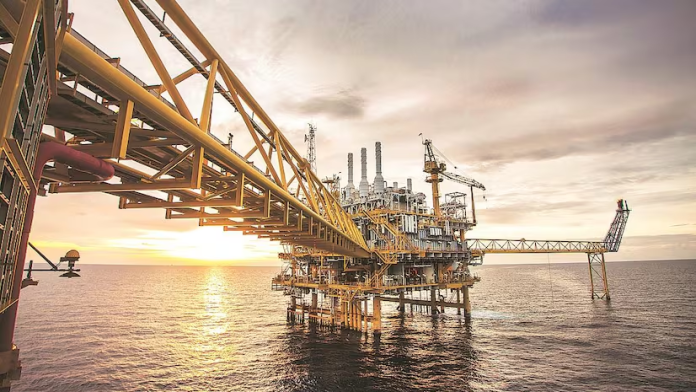The vision of an Atmanirbhar Bharat is a clarion call for transforming India into a global manufacturing powerhouse. The petrochemical industry is a critical pillar of India’s economic development, with strong backward and forward linkages supporting a wide array of downstream industries, including plastics, automobile, textiles, construction, and consumer goods.
With a market size of $220 billion, the Indian chemicals and petrochemicals sector contributes about 6 per cent to the GDP and provides employment to over 5 million people. India’s per capita petrochemical consumption is approximately 12 kgs, which is one-third of the global average, indicating significant potential for investment and growth. More importantly, this evolving space is increasingly becoming more sophisticated in terms of products and processes, necessitating investment and policy action to capture the value addition possibilities.
Key challenges
India is a net importer of chemicals and petrochemicals, relying on imports for around 45 per cent of petrochemical intermediates. With annual imports valued at about $88.6 billion, chemicals and petrochemicals are the second-largest import category in India. With over $124 billion in planned investments, this dependency is expected to decrease significantly, playing a vital role in achieving the Viksit Bharat goal.
Currently, there is a global overcapacity of 222 MMT in the six key chemicals building blocks including ethylene, propylene, butadiene, benzene, mixed xylenes and toluene, with China contributing most of this additional capacity. China is currently the world’s biggest exporter of key products like polyethylene terephthalate (PET) resins, purified terephthalate acid (PTA), polyvinyl chloride (PVC) and polyester fibre. This global overcapacity, coupled with flat demand growth in many countries and a changing geopolitical landscape, poses a threat of cheap imports flooding into India. These low-cost imports could undermine the competitiveness of Indian manufacturers, leading to market share erosion, under-utilisation of capacity, and jeopardising future investments.
Potential Measures
Tariff Rationalisation: The dynamic changes in the geopolitical landscape are impacting global trade flows, creating anomalies in the duty structure of various petrochemical products that need to be revisited. For example, India has significantly increased its domestic capacity for polyethylene terephthalate (PET) bottle-grade chips, involving substantial investments. However, despite having surplus capacity, PET, which has a tariff of 5 per cent vis-à-vis commodity polymers at 7.5 per cent, has seen a huge influx of low-cost imports, especially from China, which has eroded the competitiveness of India’s domestic producers.
A similar challenge exists with polyvinyl chloride (PVC), a critical material used for nation building activities like irrigation and construction, needs a relook in terms of tariff treatment considering its crucial role in the economy.
Restoring PVC duty back to pre-2022 levels of 10 per cent would provide the desired impetus for creating the domestic capacity. In the man-made fiber (MMF) polyester segment where domestic capacity utilisation is being hindered by low-cost imports, especially from China, warrants an upward revision of tariff to 10 per cent. A tariff increase on polyester would not only safeguard domestic manufacturers from unfair competition, but also bolster local production capacities, aligning with the ambitious textile sector growth target of $350 billion by 2030.
In addition, there are specific segments within the petrochemicals sector where India heavily relies on imports. However, the influx of low-cost imports is undermining the feasibility of domestic investments.
Tariff adjustments could provide significant support to the domestic industry by enhancing its financial viability and investment appeal. This would also promote the growth of downstream processing industries, fostering job creation and broader economic growth.
Furthermore, there are instances of duty inversion that disrupt the natural economic progression of the petrochemical value chain. This results in inefficiencies within the production process and imposes an unnecessary financial strain on domestic manufacturers.
Enhancing manufacturing infrastructure: Creation of complete ecosystems is a key need to modernise the sector. The petrochemical industry requires robust infrastructure for production, storage, and transportation to support growth. While the government has established PCPIR (Petroleum, Chemicals, and Petrochemicals Investment Regions) zones and plastic parks and is providing incentives, there remains a need for the development of additional petrochemical clusters. These clusters can help promote economies of scale and mitigate logistical challenges. Moreover, upgrading transportation networks such as ports, railways, and pipelines can streamline the movement of raw materials and finished products, thus reducing costs and time delays. This enhancement in infrastructure is crucial for the sustained growth and efficiency of the petrochemical industry.
Production-linked incentives (PLI): PLI can play a pivotal role in strengthening the petrochemical industry by encouraging investment, innovation, and competitiveness. These incentives can motivate the production of essential intermediates, high-value specialty chemicals, and performance chemicals. By providing financial incentives for meeting specific production targets, PLI schemes can attract investments, enhance technological advancements, and increase the overall productivity of the sector. This, in turn, helps build a more robust and self-sufficient industry that can compete effectively on a global scale.
Promoting research and development (R&D):Innovation is crucial for achieving self-reliance in the petrochemical sector. India must invest in R&D to develop cost-effective and sustainable production technologies. This includes developing alternative feedstocks, adopting advanced manufacturing technologies and encouraging collaboration.
Here modern artificial intelligence (AI) and high-performance computing (HPC) can play a very key role in developing new molecules and materials and also improve production processes. This will allow for new applications and also ensure environmental sustainability. There is a need to re-envision the R&D processes in the sector and align research and academic institutions and the innovation ecosystem accordingly.
The road ahead
A modern and environmentally responsive petrochemicals industry is vital cog in the global industrial arena and a major growth driver for economies. India’s petrochemical sector, with its substantial investment pipeline, has the potential to significantly contribute to the Indian economy, provided it is protected from unfair competition. Given the shifts in geopolitical dynamics and global trade patterns, it is essential to implement measures that promote domestic manufacturing and attract additional investments. This will ensure the sector’s growth, job creation, and the country’s self-sufficiency. This journey towards Atmanirbhar Bharat in petrochemicals will, however, require a coordinated effort from all stakeholders, including the government, industry players, and research institutions.












































